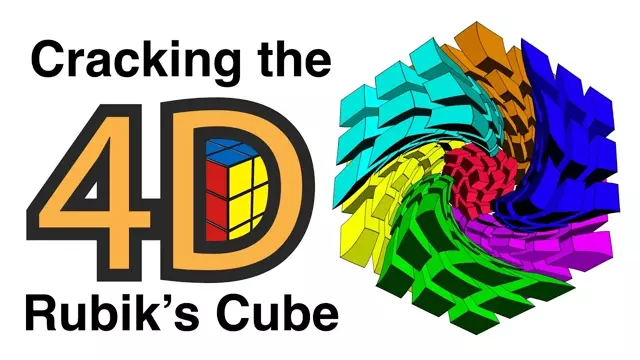2016-06-17
[public] 495K views, 7.16K likes, 314 dislikes audio only
This video is an introduction to the mysterious 4D Rubik's cube. Here my main focus is on revealing some ingenious tricks that will allow you to design your own algorithms for this crazy puzzle based on what you already know about the normal Rubik's cube.
Part 2 of this video is a hands-on introduction to the 4D Rubik's cube simulator "Magic Cube 4D". It is hosted on Mathologer 2:
You can download "Magic Cube 4D" for free from here: http://superliminal.com/cube/cube.htm
If you are really daring/totally insane and would like to try blindsolving the 4D Rubik's cube or any of the other puzzles included in "Magic Cube 4D", there is a custom made Mathologer version of the program that you can download from here: http://superliminal.com/cube/mc4d-blind.jar
(ctrl-d will toggle between greyed out and normal coloured pieces).
Special thanks go to Melinda Green, one of the developers of Magic Cube 4D and the person behind the Magic Cube 4D website for introducing me to the world of higher-dimensional twisty puzzles, answering my many questions about the program and putting together the custom made blindcubing version of the program.
I've used the following fabulous programs to generate the clips of 3D and 4D Rubik's cubes doing their thing featured in this video:
1. CubeTwister by Werner Randelshofer https://www.randelshofer.ch/cubetwister/
2. Magic Cube 3D by David Vanderschel http://david-v.home.texas.net/MC3D/
3. Magic Cube 5D by Roice Nelson http://www.gravitation3d.com/magiccube5d/
4. Magic Puzzle Ultimate by Andrey Astrelin http://cardiizastrograda.com/astr/MPUlt/ and, of course,
5. Magic Cube 4D itself.
Enjoy!
Some footnotes (for experts):
1. In a scrambled normal Rubik's Cube the permutations of edges and corners will always have the same parity, that is, either both will be odd or both even. The four algorithms that I start with (cycling 3 edges, cycling 3 corners, flipping 2 edges, twisting 2 corners) correspond to even permutations of both the edges and the corners. This means that you won't be able to solve the normal Rubik's cube by just using these algorithms if the parity of the edge (and corner) permutation is odd. However, on closer inspection it turns out that you can do so if that parity is even. And, if it is odd, just executing one quarter turn will turn these odd permutations into even permutations which can then be unscrambled just using those for algorithms.
2. The face piece and edge piece permutations of the 4D Rubik's cube are connected in a similar way, that is, either both permutations are odd or both are even. This means that if you get stuck solving the face hypercubies just using the algorithms that I talk about in the video (which all correspond to even permutations of those pieces), just execute a suitable twist and you are on your way. Once the face hypercubies are solved just using our algorithms you can solve the edge hypercubies. The corner piece permutation is always even and can always be solved just using the algorithms derived in the video.
/youtube/video/-dhHrg-KbJ0
/youtube/video/-NL76uQOpI0
/youtube/video/yhPH1369OWc?t=85
/youtube/video/yhPH1369OWc?t=419
/youtube/video/yhPH1369OWc?t=746
/youtube/video/yhPH1369OWc?t=787
/youtube/video/yhPH1369OWc?t=959
/youtube/video/yhPH1369OWc?t=1038

